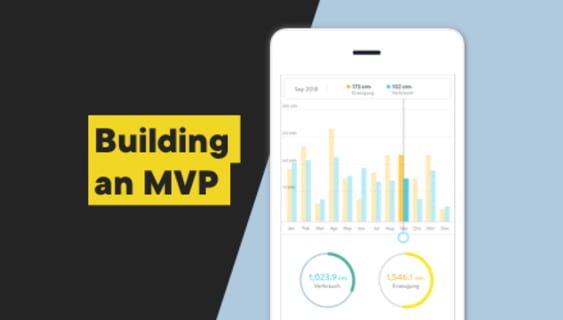One size rarely fits all. The signs that you should build a custom e-commerce platform
Choosing the right platform for future e-commerce ventures can be a tricky experience. It is vital to understand which one exactly meets your project’s demands. But what if none of them will? Then it’s time to consider building a custom solution.

Table of contents
Swimming in the sea of possibilities - this could be an accurate description of the current e-commerce platform market. There’s no way to remember them all and every one of them has many pros and cons, so don’t expect to find the perfect solution at once.
Eventually, you may hit a wall and come to a scary conclusion: the only way is to hire a dev team and build a custom e-commerce platform yourself. And that’s not a bad idea.
All in the black box - SaaS e-commerce platforms
The first category that comes to mind is also the simplest one. If you’re just starting your e-commerce journey and don’t have any experience with development, a SaaS platform would be an obvious choice. SaaS (that is, Software-as-a-Service) typically means that the whole software package is licensed to you with a monthly fee and can be run in the vendor’s cloud. As a SaaS client, you don’t have to worry about such things as security and maintenance.
A few popular SaaS e-commerce platforms are:
- Shopify;
- Shoplo;
- BigCommerce;
- Volusion;
- Big Cartel.
Simplicity and swiftness are the main advantages of the Saas e-commerce platform model. On the other hand, they often have a lack of thorough customization, and additional fees per sales volume (e.g. Shopify) which can tip the balance towards the cons side. Most vendors don’t give access to their system source code and there is not much in the way of additional features. You get what you get, which sometimes can mean a lot of adaptation to the platform’s way of doing things.
A Swedish table from Ikea: open source e-commerce platforms
Now, let’s turn everything upside down. The key factor here is total freedom and creativity boosted by a huge community of users and developers. In most cases, open source platforms rely on your infrastructure and their source code is freely available to everyone. Instead of “ready to use”, we have the choice to assemble the parts by hand, select all the plugins (free and also paid) and switch off unwanted modules.
A few popular open-source e-commerce platforms are:
- Magento;
- WooCommerce;
- PrestaShop;
- OpenCart;
- Zen Cart.
Openness and unhampered customization are the crucial ingredients of open source e-commerce platforms. That’s why you have to roll up your sleeves and prepare for big chunks of development work. Compared to SaaS systems, open source platforms are more demanding in terms of system resources. Also, scaling up the project inflates the cost. This leads us to another potential problem, which is security.
The more elaborate the functions you put inside your open source platform, the harder and more expensive it will be to maintain and update the whole structure. Sometimes companies prolong or even skip critical updates. This is a recipe for disaster. Mainstream systems like Magento are often tempting to hackers and malware for one simple reason: their potential bug leaks are easy to find online.
Do it yourself: - custom e-commerce platforms
The option of developing a custom online store comes into view when none of the available solutions fits your specific needs. Let’s say you have a vision for the features that aren’t available from third-party vendors (e.g. a non-standard checkout process). This gives you an opportunity to stand out from the competition. And yes, starting from the ground up can be a long and bumpy road, but with a bulletproof dev team, it is definitely worth it.
Remember that you have full control over the appearance, functionality, and performance of a custom e-commerce platform. This time security and bug leaks are not your main problem. The dev team can focus on tweaking every detail of the logistics in the case of multiple warehouses and vendors. Are you planning to sell products that can be customized by clients? No problemo.
According to the famous Peter Parker principle: “With great power, there must also come great responsibility!”. From a cost perspective, an initial investment in designing a custom e-commerce platform may be over your budget. But in the long term, the ROI from a more personalized user experience can be much higher. Also, by hiring your own developers for your store technology, you’re expanding your online project’s longevity and keeping your independence - you don’t have to worry about vendor lock-in.
As PwC reports, customer experience plays a major role in purchasing decisions, with 73% of all people pointing to this factor. In fact, for services tailored to their specific needs, customers are willing to come back and buy even more products. Choosing a custom e-commerce platform could be a game-changer if you care about user experience and high customer retention.
Summary
I personally believe in the words of the legendary Frank Zappa, who said that without deviation from the norm, progress is not possible. Custom-made solutions always symbolize creativity and the courage to think in a different way. From all of the above e-commerce platform categories, developing your own online store from zero is the hardest one. But it is also the most rewarding. It glues together the best features from both SaaS and open- source.
You should build a custom e-commerce platform if:
- you have outgrown the standard solutions (SaaS/open source);
- you need to take full control over the appearance of the online store;
- you need non-standard features (custom checkout, logistics, customer service, etc.);
- you want to sell products that can be customized by the clients;
- you are worried about security and bug leaks on major platforms.
Share this article:









